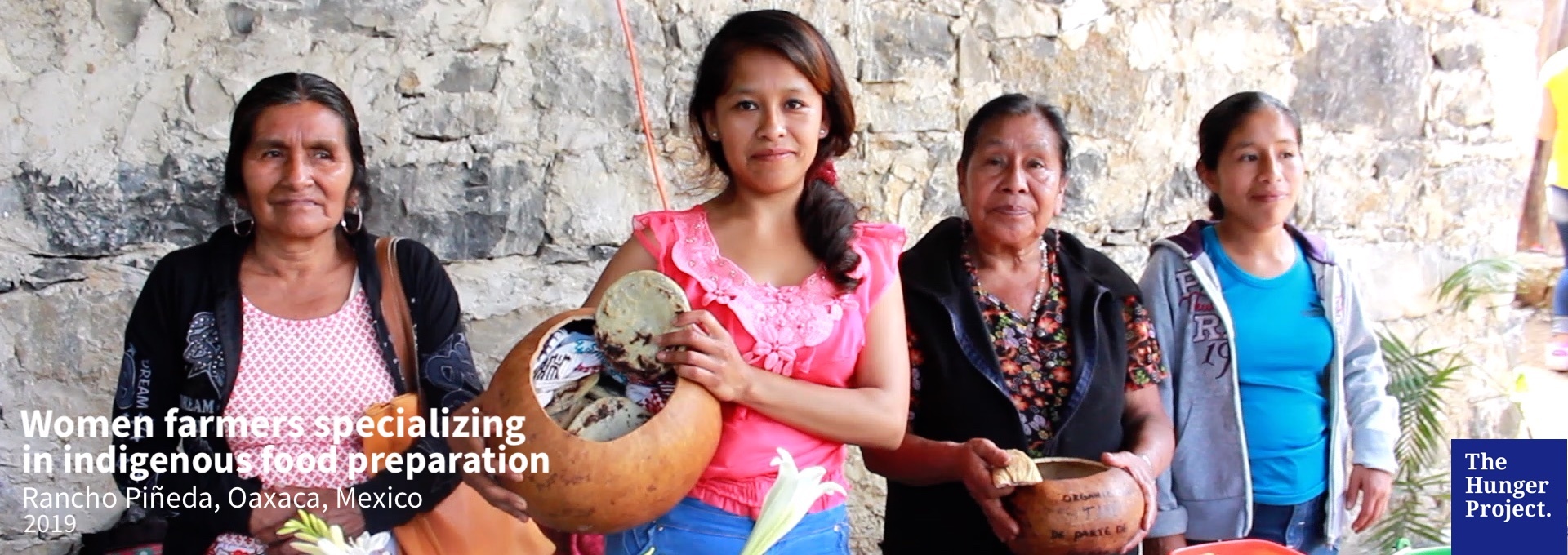By Tim Prewitt, CEO – The Hunger Project
This year, the world is coming together to chart a path toward a more sustainable and equitable food system—a system that can meet the demands of our ever-growing population and is resilient to environmental shocks.
Having spent my career working on food systems, I can easily say that never before have we seen such an outpouring of global engagement on this important topic. Typically, conversations about improving food systems focus on complex, commercial agricultural systems, delivering products from farm to table, often across borders. Nearly six billion people around the world find nourishment from these complex, commercial food systems, dominated by global agribusinesses that are responsible for producing a massive amount of food for our planet’s people.
What’s missing in this conversation? Community-level farming. Particularly trends driven largely by smallholder farmers. Smallholder farmers aren’t a footnote, they are the lifeblood of a global food system. According to IFAD, there are about 500 million smallholder farms globally. These farmers produce about 80% of the food consumed across Asia and sub-Saharan Africa and employ more than two billion people. If we don’t address the food systems that revolve around these people, we are missing a huge chunk of the world’s agriculture production and will likely design food systems that continue to perpetuate hunger.
At The Hunger Project (THP), we work with communities to build sustainable systems that address some of the key issues that smallholder farmers—and their customers—face. I believe these solutions can and should be scaled.
A significant shift in smallholder agriculture lately has been the introduction of hybrid seeds. They produce hardier, climate resilient crops and have increased nutritional value. But they don’t produce seeds that can be harvested and planted the next season. This requires farmers to purchase new seeds each planting season, which can be cost prohibitive. In our experience, one of the greatest challenges smallholder farmers face is consistent and affordable access to inputs. So maintaining healthy community-level food systems means ensuring that farmers have access to farm input loans or business cooperatives that allow them to buy seeds each season.
We can also create ways to supplement hybrid seeds. One of the ways we can do this is by reintroducing native and traditional crops. THP teams have been working with communities and farmers to increase the use of traditional produce in community diets. In Mexico, our teams are working with community-based catalysts to reintroduce traditional Mazateca recipes that leverage fresh, local ingredients. This reduces the amount of non-native and processed foodstuffs that must be brought into communities. In Benin, we work with other civil society organizations to promote crop festivals that celebrate local produce and teach people how to plant it, use it and preserve it.
Once crop yields are produced and stable, the next step is to strengthen the market. To be effective, and to earn a sufficient income to meet their needs, smallholder farmers need access to information about fair market prices for their goods. Thankfully, there are a growing number of mobile apps and services that are connecting farmers to real time data about crop prices and market conditions. In many communities we at THP have facilitated local action to build and stock food banks. Here farmers store staple crops after the harvest when prices are low, and sell when prices are higher – as well as meet annual shortages right before harvest.
Finally, it is important to note that many countries have entitlement schemes (government programs) and services that are available to communities. Oftentimes these services are overstretched or difficult to secure. When communities are well organized, they are able to demand resources, such as farm extension services or veterinary services that are often prioritized for the larger, more influential farms. The more engaged and organized communities are, the better the results for the agricultural systems.
Trained, engaged government leaders are critical for change. In India, we work with women who are elected to serve at the panchayat (village council) level. As part of THP training programs, we work with the women to identify services that could benefit their constituents and support them as they navigate the bureaucracy. Their work and ability to secure these entitlements, such as grants for seeds and other inputs, is an important bolster to the local-level food system.
As we come together this summer and fall to reimagine the global food system, it is crucial that we deeply examine local-level food systems that directly impact two billion people on our planet. There are no “silver bullet” solutions. But, it is possible for us to work with people living in rural communities around the globe to build stronger and more resilient systems that can help us feed our planet.


